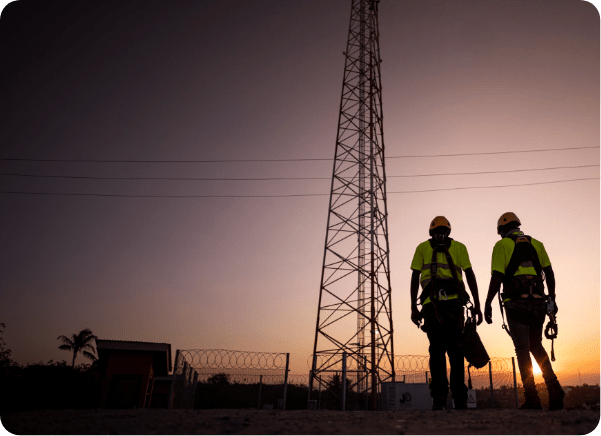Drone Data: Supplementing Other Data Capturing Techniques
If we go back 10 or 20 years, site audits were carried out by a two-person rigging crew equipped with a sheet of paper, a pencil, a tape measure, a caliper for measurements, and a camera for photographic recording. In recent years, with the increasing demand for fast data capturing and processing, the use of drones has become one of the main elements of our work at Delmec.
Initially, the scope of drone use was quite simple and limited. The operator would fly the drone around the site and take a series of pictures of the tower, recording information about the geometry of the structure, existing equipment, and the possibility of adding additional antennas, checking the Line of Site, and so on. For new sites, flying a drone allows panoramic photographs to be taken, they could be checked for potential signal obstructions, and the future height of the structure can be determined.
The use of drones has become very helpful in the case of sites that, for various reasons, could not be surveyed in the traditional way by site teams – such as being in areas with difficult access (on floodplains or warfare zones) or in situations where climbing the structure would not be safe due to poor condition. During the pandemic, drones made it possible to reach places where humans could not.
An important element is the use of drones as a supplement tool for data capturing and analysis. In the case of a TSS or Due Diligence audit, the visit is performed by one engineer, while the drone is used as a tool to support and speed up the process. One person performs the work at ground level, while the drone is used to take pictures at height. Reducing the crew to just one person with a drone is a vital factor with limited human resources and increasing labour costs. It also significantly minimises the risk of an accident.
In the office environment, drone usage can improve data processing and enhance portfolio management. Engineers can verify legacy data from the old as-built documents, historical surveys, or a client’s database and compare it with the latest information captured during drone surveys. Having very accurate and up-to-date data allows the site owner to make the best business and investment decisions.
The Future of Drone Usage in the Telecom Industry
The development of information technology, including Artificial Intelligence, has made the use of drones expand significantly. Autonomous drones are being tested on an increasing scale where the flight allows required pictures and videos to be taken independently, without human intervention.
Modern applications using AI allow conversion of the image data into point cloud and create the so-called digital twin – a digital equivalent of a physical site. Specialist software can read the tower geometry, equipment type, or ancillaries such as platforms, feeder lines, ladders, etc., and present detailed information in the digital format. These 3D models can then be viewed and edited in an app, on a laptop, or smartphone, or can be seen in hologram form if we use VR.
Works are well in progress to create algorithms that will analyze the condition of a structure. This will mean issues such as loose or missing bolts, the progress of corrosion on members and bolts, deformation of the structure, or deterioration of the site can be identified.
A tremendous step will be connecting drone apps with the static analysis software so that data captured by the drone can be converted into a structural model, where the tower structure and loading will be automatically generated, and the engineer’s work will be limited to the analysis of this data and checking for correctness. In the next phase of this technology, it is likely this element will also become automated.
Delmec has monitored the growing importance of drone technology over the recent years and we have actively cooperated with the relevant companies in this sector. We are confident that drones will become a key element in the future of the telecom industry, and we will continue to use their benefits to support our clients.




